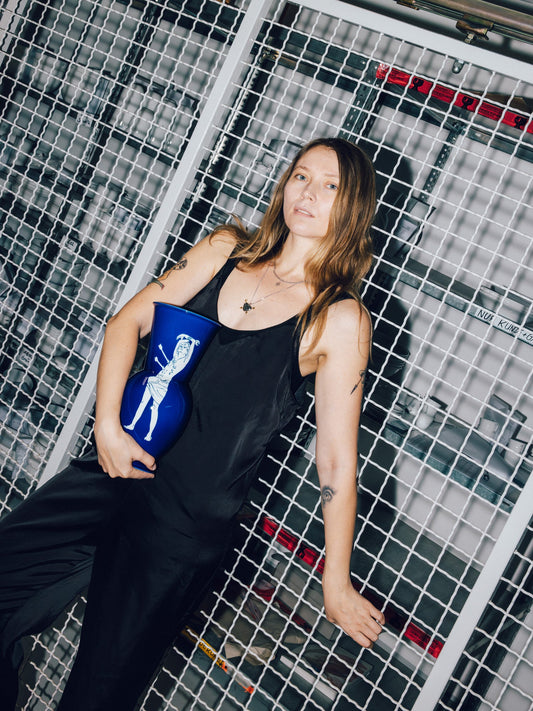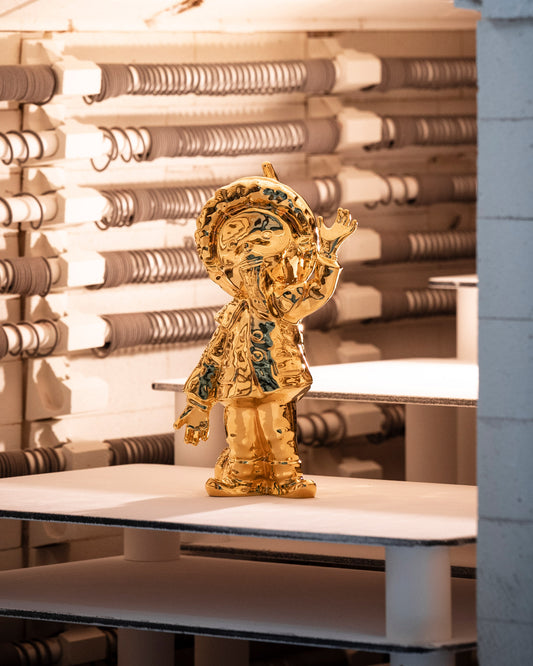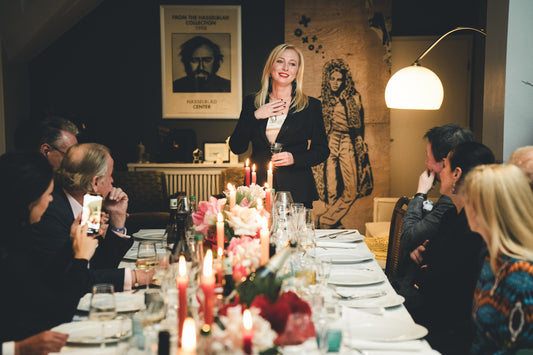IN SEARCH OF TRACES – THE BERLIN COMMEMORATIVE PLAQUE
Small places of remembrance. The delicate porcelain plaques nestle discreetly against house walls and facades. There are already over 500 of these places in Berlin. And there are more and more. Since 1985, the memorial plaques manufactured at KPM have commemorated outstanding personalities and special institutions. They tell stories and keep history alive. We want to show you some of them in the coming months!
Art figure, musician, actor - David Bowie
Today we start with Hauptstraße 155 in Schöneberg. This is where one of the greatest musicians in pop history lived from 1976 to 1978: David Bowie, "Major Tom" or "Thin White Duke", an androgynous alien in a knitted body and kimono, Ziggy Stardust with make-up and tousled hair: Bowie was a style-defining art figure, a gifted musician, a versatile actor, a terrific lyricist, in short: an outstanding artist in every respect.
When the then 29-year-old musician moved to Berlin, it was probably only the die-hard fans who knew about the Schöneberger Quartier - but since 2016, the whole world has known. Every year on the anniversary of his death, January 10, hundreds of flowers, candles and farewell gifts commemorate his life and work - which did not remain unproductive during his years in the German capital. The three albums "Low", "Heroes" and "Lodger" have gone down in pop history as the "Berlin Trilogy". And for the rest of the year, the white board bears witness to this.
RCA Records
RCA Records
On the road: Mark Twain
Huckleberry Finn and Tom Sawyer – have you also read the adventure stories by Mark Twain, who brought the great world into our children's rooms? What many do not know: the trained typesetter worked predominantly as a journalist – more precisely, as a travel journalist. This is precisely why he went to Europe for the third time in 1891, where he stayed for a whole nine years. Our search for clues takes us to where the US American lived for the winter months of 1891/1892: Körnerstraße 7 in the Tiergarten district.
The medallions are protected by a layer of wax applied with a brush before glazing. The wax melts during firing, releasing the delicate biscuit porcelain and allowing the other porcelain surfaces to shine in their brilliance.
Mark Twain (1835 – 1910)
In his travel diaries, he was quite humorous and sharp-tongued compared to his socio-critical literary works. He repeatedly praised – albeit in an ironic way – intellectual Berlin: **“**I even believe that there is nothing in the world that you cannot learn here. Except the German language.” – A language with which the author could not make friends until his death in 1910. Unfortunately, Twain's life in the capital was hardly reflected in his literary work. The translation of Struwwelpeter into English is certainly one of his highlights here.
The house in Körnerstraße, which the writer affectionately called the "ragpicker's quarter", was demolished in 1902 and replaced by a post office, on which we can find the memorial plaque today.
With love for the city: Christian Morgenstern
At Stuttgarter Platz 4 in Charlottenburg-Wilmersdorf we find another KPM porcelain panel. The writer and playwright Christian Morgenstern lived here around the turn of the century.
Christian Morgenstern (1871 – 1914)
Morgenstern had a talent for using language extremely creatively, which was particularly pleasing to readers of his works. His ironic and endearing – sometimes somewhat biting – wit provided great reading pleasure. The “Galgenlieder” are among his most successful works and have also inspired other artists. This includes the sculptor Ludwig Gies, who in 1926 was inspired by the poem of the same name to create the sculpture “Mondschaf”.
Morgenstern, who died of tuberculosis in 1914, was very much influenced by his time in Berlin. He captured his love for the capital in his melancholic poem “Berlin” in 1906:
I love you in mist and at night,
when your lines swim together, –
especially at night, when your windows gleam
and humanity makes your rocks alive.
What is known by day becomes enigmatic in the dark;
like fortresses of the soul, they stand there mystically,
the rows of houses, with their twinkling lights;
and unity is sensed by those who otherwise saw only multiplicity.
The last gleam extinguishes in blind panes;
a game is cleared away into its boxes;
a boisterous activity rests tamed,
and what dreams so full of fate becomes sacred.
During your next visit to Berlin, pay attention to the delicate memorial plaques. The award-winning design by Wieland Schütz remains unchanged to this day. Whether Richard Strauss, Inge Meysel, Dietrich Bonhoeffer, Hildegard Knef or Harald Juhnke: the list of stories to be told by the porcelain plaques is long.
Have you already discovered some? Then feel free to share them with us via Instagram. Simply post your photo in your Instagram feed or your Instagram story and link @kpmberlin. We look forward to your contributions!


